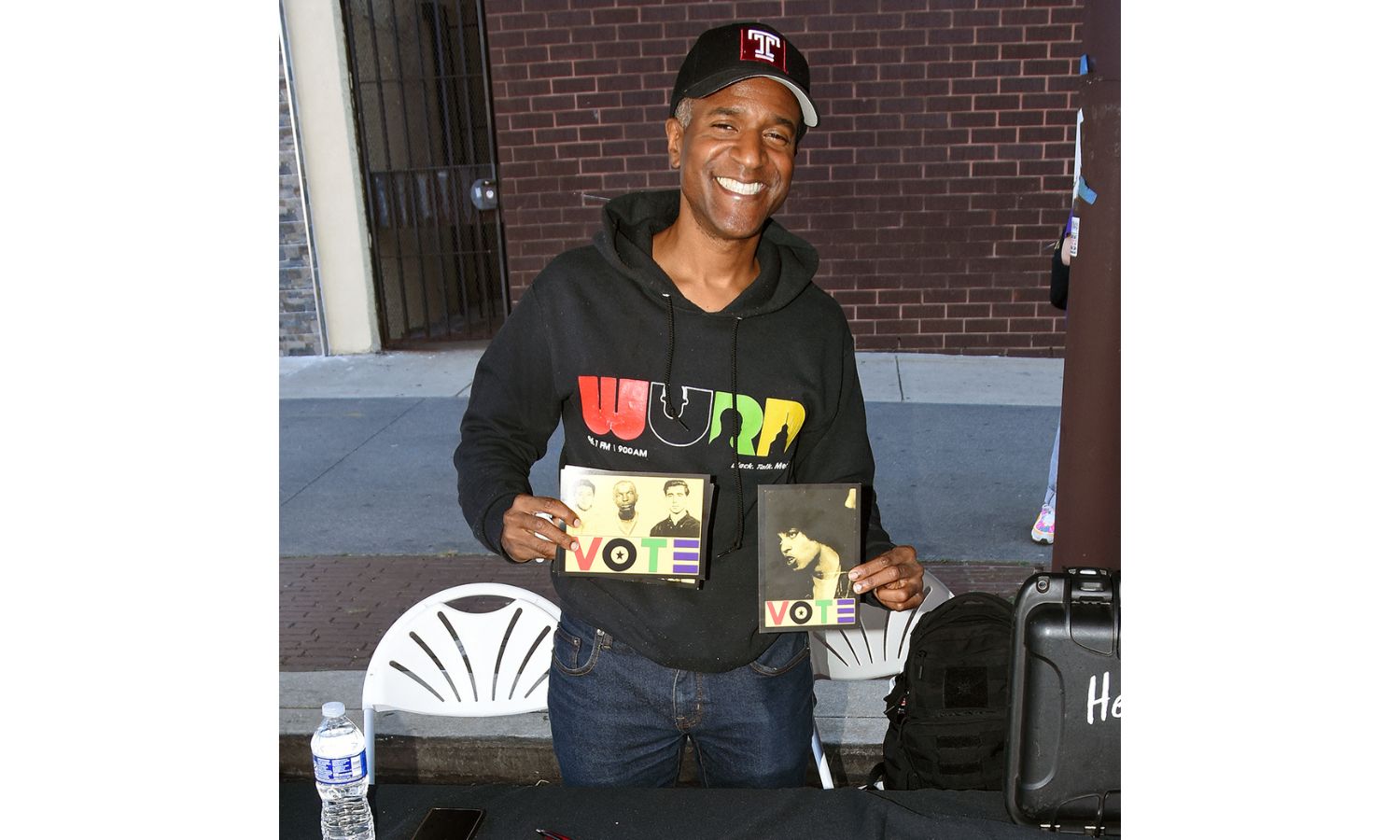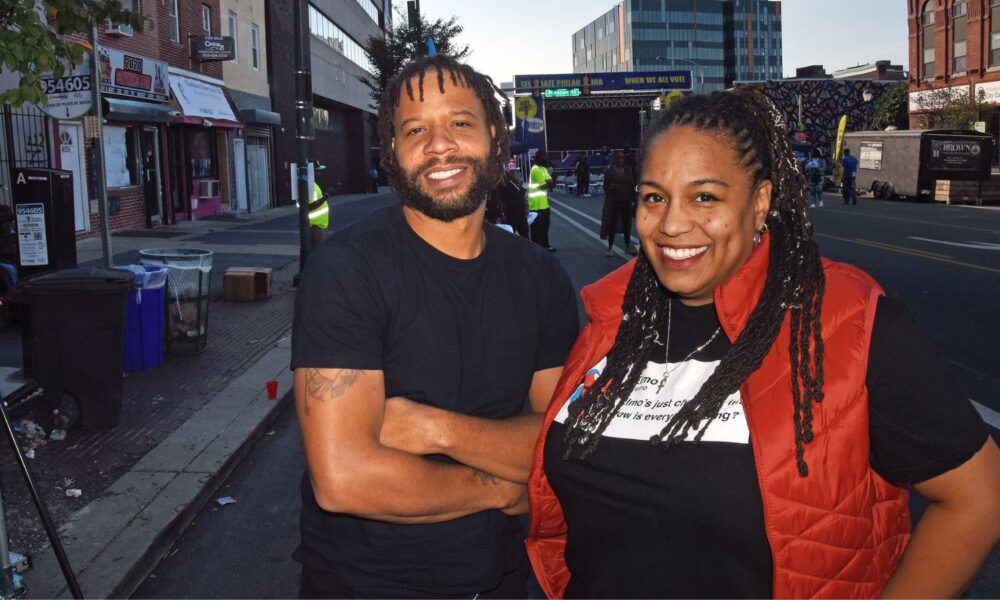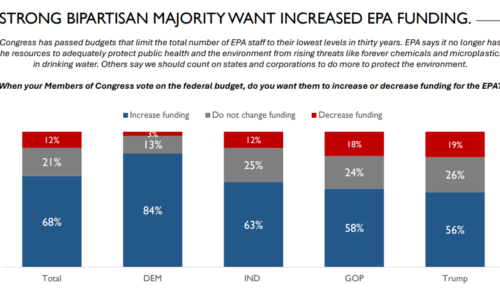At a mid-October voter registration block party in West Philadelphia, there was a conundrum of enthusiasm and uncertainty for voting in the presidential election. The enthusiasm was symbolized by Zyoum Brothers, a 28-year-old who was previously incarcerated. He said he was voting for the first time. “It’s the least that I can do for my community,” he said. “I sold drugs and was hurting my community. I’m going to try voting and see it if it helps.”
At a table for a Black talk radio station, host Aaron Smith said he sensed a lot of energy for the election from his listeners, particularly Black women. “For a lot of Black women, it’s an opportunity to be heard and seen for the first time in a long time,” said Smith, 49.
Zorita Dorsey, 47, the block party’s production manager, said she was hearing mixed messages. She said more people than she expected were giving $1,000 to the Harris campaign. But she also said some friends say they may not vote at all in anger over what they perceive as the Biden-Harris administration’s inaction on the war in the Middle East.
She said some friends are discouraged by what they see as a broken system. “Some of them are very concerned that their vote is not going to mean anything because the election is going to be stolen,” Dorsey said.
 Aaron Smith, a Black talk radio host, attended a voter registration block party in Philadelphia earlier this month. He said he was hearing a lot of energy from Black women voters who felt they were being “heard and seen for the first time in a long time.” Photo by Derrick Z. Jackson.
Aaron Smith, a Black talk radio host, attended a voter registration block party in Philadelphia earlier this month. He said he was hearing a lot of energy from Black women voters who felt they were being “heard and seen for the first time in a long time.” Photo by Derrick Z. Jackson.Gap in party registration narrows, even in deep blue Philly
That range of sentiments adds to the mystery that makes Pennsylvania one of the most bitterly contested presidential swing states and one of the hardest states to predict an outcome. After Democrat Barack Obama won this state handily in 2008 and 2012, Donald Trump won the state by 44,000 votes out of 6.2 million votes cast in 2016. Joe Biden won the state back for the Democrats in 2020 by 80,000 votes out of 6.9 million cast in record turnout among its 9.1 million registered voters.
Biden won in Pennsylvania despite Republicans dramatically closing the gap in voter registration. In 2016, there were nearly 900,000 more registered Democrats than Republicans. In 2020, the gap was 666,000.
This year, the gap has been slashed much narrower still. There remains about 9.1 registered voters, but the gap in voter registration between parties is now 298,000. There are also 1.4 million registered voters in Pennsylvania who are not registered with either party, up from 1.2 million in 2016.
The gap in voter registration between parties has narrowed even in Philadelphia, where between 80 percent and 85 percent of votes routinely go to Democratic presidential candidates. In the 2020 election, the city saw its highest turnout since 1984. This year, the number of registered voters in the presidential general election in the city is around 1.1 million, about the same it has been since 2008. But according to data from the state, as of the October 21 deadline to register, the number of registered Democrats has fallen dramatically from 856,949 in 2020 to 796,221. The party gap has shrunk by nearly 70,000 votes.
There are many reasons according to several media analyses. They include voters who finally switched parties after years of voting more conservative, voters in communities that have shifted to the right, voters who are disgusted with both parties and go independent, and voters who have moved out of state. The Philadelphia Inquirer also recently reported on working-class and low-income communities in Philadelphia that have also drifted rightward, frustrated with economic struggles.
Racial disparities in voter turnout exist
The Philadelphia Inquirer and many other local and national media outlets have also noted that since 2020, Philadelphia turnout has slumped in majority Black and Latino working-class neighborhoods. A multi-county Union of Concerned Scientists analysis earlier this year found there were significant racial disparities in both turnout and ballot acceptance in 2020 in 11 key counties in 7 swing states, including Philadelphia County in Pennsylvania. The findings from UCS showed that in majority Black and Latino neighborhoods with low turnout, voters also are more likely to have their provisional or absentee ballots rejected.
Michael Latner, a former UCS senior fellow and report co-author said the Philadelphia neighborhood of Cedarbrook, a majority Black neighborhood with low poverty, had a voter turnout rate of 84 percent in 2020, while Kensington, a majority Black neighborhood in Philadelphia with high poverty, saw less than a third of registered voters turn out. “More than any other social condition, concentrated poverty erodes the cooperative networks on which democratic participation depends,” Latner said.
Study co-author Liza Gordon-Rogers said, “People who live just blocks apart might have totally different experiences in the political process, and that has real consequences for election outcomes.”
The differences were summed up in a feature in The Philadelphia Inquirer where one activist told the newspaper that the cry of the Democrats about threats to democracy in this election “means very little for people who can’t keep the lights on.”
To be sure, registration data and past turnout is not destiny. Even in the 2020 election with its record turnout, more than 2 million registered voters stayed home in Pennsylvania. That means that the election results this year will likely come down to who has the most effective ground campaign in the final days, especially in hard-hit areas.
 At a voter registration block party in Philadelphia earlier this month, Stagehand Antonio Zachary (left) said he has seen more election disinformation as never before in text messages. Event Producer Zorita Dorsey (right) said she has heard everything from friends giving large campaign donations to discouragement that voting “is not going to mean anything.” Photo by Derrick Z. Jackson.
At a voter registration block party in Philadelphia earlier this month, Stagehand Antonio Zachary (left) said he has seen more election disinformation as never before in text messages. Event Producer Zorita Dorsey (right) said she has heard everything from friends giving large campaign donations to discouragement that voting “is not going to mean anything.” Photo by Derrick Z. Jackson.Get-out-the-vote events proven to work
Many attendees at the West Philadelphia block party wondered exactly if events such as this would help boost turnout for this election. One study published this year by researchers at Rice University, Oberlin College, and the University of Pennsylvania found that voter block parties can increase turnout, particularly in African American communities and sometimes on par with other get-out-the-vote interventions, such as door-to-door canvassing, mailers, and phone calls.
Can that compete with the siege of advertising swamping voters? Antonio Zachary, a 42-year-old stagehand for the event, said he and friends have been bombarded as never before with text messages full of slanderous disinformation. He wondered if that would have a numbing effect on voters. “I honestly can’t tell you how enthusiastic people will be.” Zachary said.
Rashida Northington, 46, is a canvasser for the city’s overdose response unit in between gigs such as being a Door Dash driver. She said on one hand, there is a lot of excitement about Harris from Black women connected to sororities. On the other, she hears a lot of complaints from working class voters about immigration and taxes. “People going to a food bank want to see the benefits of voting,” she said.
The next few days will tell if enough people see the benefits of voting to make Philadelphia a major story in the most major of battleground states.

 2 weeks ago
27
2 weeks ago
27


